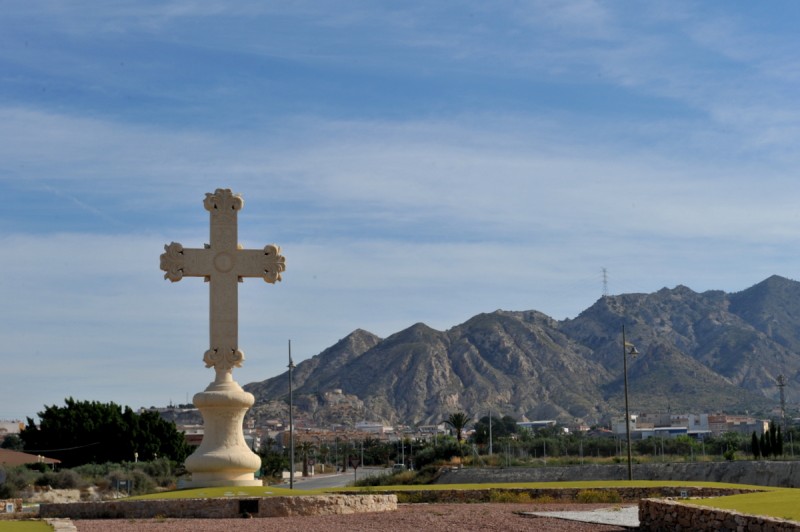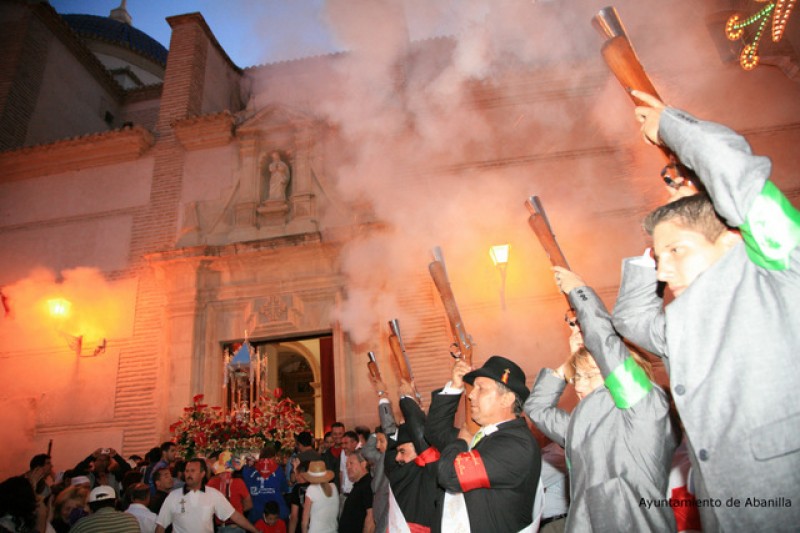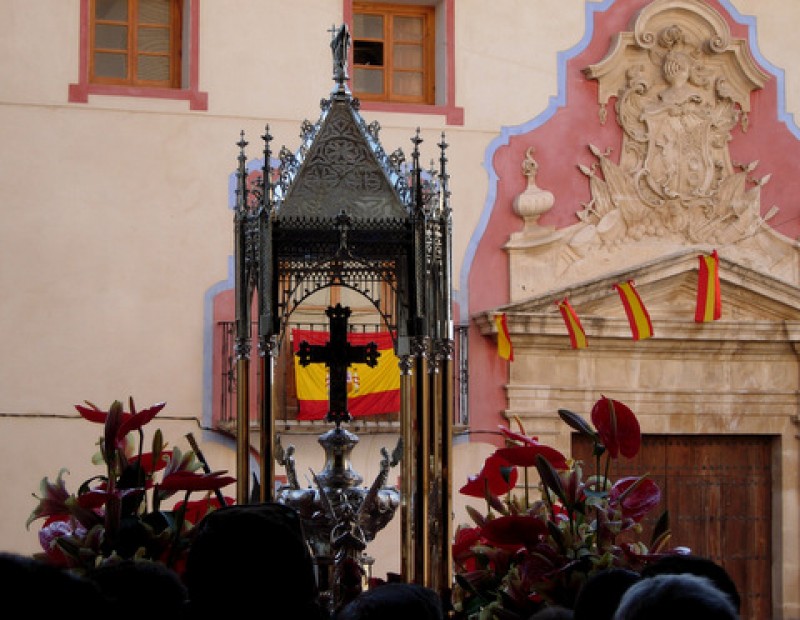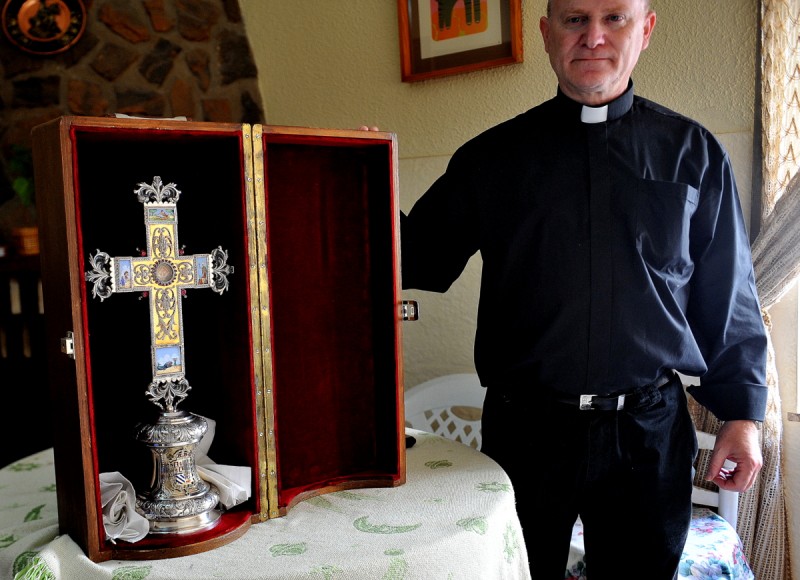article_detail
The Santa Cruz, the Holy Cross of Abanilla
The fragment of the Holy Cross is believed to have appeared in Abanilla in the 17th century
One of the defining elements in the character of the town of Abanilla and its inhabitants is the existence in the parish church dedicated to San José of a holy relic, whose origins are the subject of uncertainty and legend This relic is the object of loyal devotion among the locals even today: it plays a crucial role, for example, in the annual fiestas, and is carried on a Romería to Mahoya every 3rd May.
This relic is a “lignum crucis”, a fragment of the cross on which Jesus Christ was crucified, and it is officially recognized as genuine by the Catholic Church. This leads to Abanilla being featured on one of the pilgrimage routes to Caravaca de la Cruz, the “route of the four crosses”, which begins in Granja de Rocamora before passing through Abanilla and Ulea on the way to Caravaca.

The most widely accepted scholarly explanation for the arrival of part of the Holy Cross in Abanilla is that it was part of an influx of holy relics during the 17th century, following the expulsion of the Moorish converts to Christianity by Felipe III in 1614. This caused a severe loss of population in Abanilla, Fortuna and the Ricote valley, and the sudden appearance of dozens of relics coincided with the efforts of the Diocese of Cartagena to achieve a “spiritual re-conquest” of the area.(See History of Abanilla)
However, the installation of these relics often went in hand with the emergence of far less prosaic legends surrounding how they came to be in Murcia, and the Cross of Abanilla is no exception.
The legend in Abanilla is that the Cross was revealed to those working in the countryside of Mahoya – variously labourers, shepherds or the Mayor – at the site of an old abandoned hermitage on 3rd May, and that for this reason the habit of worshipping the Cross began.
Further embellishment is added by the story that the cross had been accidentally left there by soldiers in the late 14th or early 15th century, when they left behind a leather bag containing two fragments or splinters of wood in the shape of a cross which are said to have been a holy relic belonging to the archbishop of Zaragoza. The cross was found by farmers and handed to the priest of Abanilla, who placed it on the main altar, but during the night it mysteriously disappeared.
The next morning the cross was found again in the same spot where it had appeared in Mahoya, and when it was returned to the priest he suspected harmless mischief on the part of one of the congregation and again placed it on the altar. Once again, though, the relic was not there in the morning, and again it re-appeared in Mahoya in a shaft of light.
This time both the priest and the locals were convinced that there must be some religious significance to the location, and it was decided that a small church should be built in the Mahoya countryside, while at the same time the brotherhood of the Holy Cross (the Santa Cruz) was founded.
It is known from documentary evidence that this brotherhood existed before 1564, and in piecing together the elements of the story local historians have deduced that the events leading to its creation probably took place during the reign of Pedro IV of Aragón, who was in power from 1336 to 1387 and was often accompanied by the archbishop of Zaragoza during his military campaigns. It is chronicled that during a retreat thousands of his troops passed through the countryside of Abanilla, following the course of the River Chícamo, and the theory is that it was during this time that the cross was left in Mahoya.
An alternative theory is that the Cross reached Abanilla through the Order of Calatrava, which governed here at a local level for centuries.

Either way, the first Santa Cruz of Abanilla was confiscated by the Mayor in 1936 at the start of the Spanish Civil War and was never seen again.
Unbowed, though, when the conflict ended the town sent a request to the Vatican for a replacement, and this duly arrived in a cylindrical capsule on 24th September 1939. Five years later a new reliquary, similar in design to the one which had disappeared, was completed, made from an alloy of silver, copper, zinc and nickel. This is where the replacement lignum crucis is still kept, for most of the year in the Iglesia de San José, although during the annual fiestas it visits numerous locations in Abanilla.

Sceptics may have their doubts over the veracity of the Cross of Abanilla and others like it, but they would be well advised not to voice them within earshot of the locals. The Santa Cruz is revered by practically the whole town: the roundabout at the entrance to Abanilla features a large monumental representation of the reliquary, and every 1st and 3rd May as many as 1,500 people play active parts in the Romería and the Moors and Christians parade: that is equivalent to a quarter of the whole population of the municipality, showing the extent to which Abanilla embraces the worship of the relic.
The reliquery can be seen in a chapel of Parroquía de San José for most of the year: Click for more information and a map: Parroquía de San José, Abanilla
Click for more information about visiting the Abanilla municipality, as well as what to see and agenda
article_detail
Contact Spanish News Today: Editorial 966 260 896 /
Office 968 018 268













